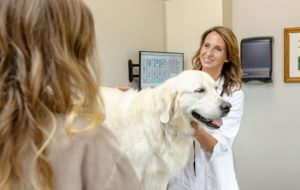As the seasons change, so does your pet’s coat! Shedding is a natural process for both dogs and cats, allowing them to get rid of old or damaged fur to make way for a new, healthy coat. While some shedding is normal year-round, you may notice an increase during seasonal transitions—typically in the spring and fall. If you find yourself vacuuming more often or constantly battling fur-covered furniture, don’t worry! With the right approach, you can help manage your pet’s shedding while keeping their coat and skin in top condition.
Understanding Shedding in Dogs and Cats
Shedding varies by breed, age, and overall health. Some pets, like Labrador Retrievers, Siberian Huskies, and Maine Coons, shed heavily due to their thick coats, while others, such as Poodles and Cornish Rex cats, shed very little. Seasonal shedding occurs because pets naturally adjust their coats to regulate body temperature—shedding their dense winter undercoat in the spring and growing a new one in preparation for colder months in the fall.
Factors like diet, stress, and underlying health conditions can also impact shedding. If you notice excessive hair loss, bald patches, or skin irritation, it’s a good idea to consult your veterinarian to rule out any medical issues.

Photo from Pexels
Tips for Managing Shedding and Keeping Your Pet’s Coat Healthy
While you can’t stop shedding entirely, there are several ways to manage it and keep your pet’s coat looking its best.

Photo by Julie Balgavy Photography
When to See a Veterinarian
While normal shedding is expected, excessive hair loss can be a sign of underlying health problems such as allergies, parasites, hormonal imbalances, or skin infections. If you notice any of the following symptoms, schedule a visit with your veterinarian:
- Bald patches or uneven hair loss
- Red, flaky, or irritated skin
- Constant scratching or excessive licking
- Dull, brittle coat
- Sudden increase in shedding unrelated to seasonal changes
Your vet can perform a thorough examination and recommend appropriate treatments to address any underlying health concerns.
Final Thoughts
Shedding season doesn’t have to be a nightmare! With proper grooming, nutrition, and care, you can minimize excess fur while keeping your pet comfortable and healthy. Embrace the fluff and use shedding season as an opportunity to bond with your furry companion through regular brushing and extra cuddle time. And if you ever have concerns about your pet’s shedding, don’t hesitate to reach out to our FFVH veterinary team for guidance!


